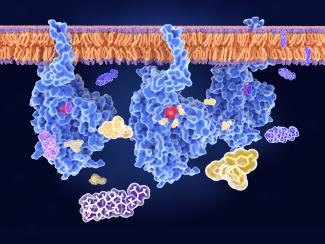Xenobiotics are molecules that are not produced in vivo, but rather, are introduced into the body from the environment and subsequently metabolized by the body. Routes of introduction to the body include inhalation (e.g. aromatic hydrocarbons in cigarette smoke), intravenous (e.g. various anesthetics), transdermal and, for most pharmaceutical agents, ingestion. The metabolism of xenobiotics in our environment is an important field of investigation. However, to minimize risk and optimize therapeutic benefits, it is critical that the metabolism of candidate pharmaceutical agents be elucidated, including identification and properties of key metabolites.
Displaying 101 - 108 of 108
| Product | CAT.# | Size | Price | |
|---|---|---|---|---|
| Microsomes, 3-Methylcholanthrene Ind. Rat Liver | PC21 | 0.2 mg | $260.00 | |
| Microsomes, Clofibrate Induced Rat Liver | PC12 | 0.2 mg | $260.00 | |
| Microsomes, Dexamethasone Induced Rat Liver | PC18 | 0.2 mg | $260.00 | |
| Microsomes, Female Rat Liver | PC11 | 0.2 mg | $260.00 | |
| Microsomes, Pyridine Induced Rat Liver | PC16 | 0.2 mg | $260.00 | |
| NADPH-P450 Reductase, Recombinant Human | PH51 | 0.2 mg | $390.00 | |
| Recombinant Human Cytochrome b5 | PH91 | 100 ug | $435.00 | |
| UGT-Express 2B7, 1.0 gram | UG27.1gram | 1.0 gram | $510.00 |

